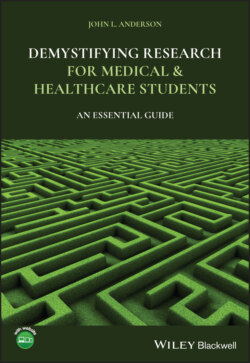Читать книгу Demystifying Research for Medical and Healthcare Students - John L. Anderson - Страница 60
BIA 10–2474 Trial
ОглавлениеIn one phase trial, BIA 10‐2474 (an orally administered reversible FAAH inhibitor) was given to healthy volunteers with a view to assessing its safety.
‘Single doses (0.25 to 100 mg) and repeated oral doses (2.5 to 20 mg for 10 days) of BIA 10‐2474 had been administered to 84 healthy volunteers in sequential cohorts; no severe adverse events had been reported. Another cohort of participants was then assigned to placebo (2 participants) or 50 mg of BIA 10‐2474 per day (6 participants)’. ‘They had received the highest cumulative dose (250 to 300 mg) administered to humans’ (Kerbrat et al. 2016). In this final cohort, four of the six participants developed an acute, rapidly progressing neurological reaction. This included headaches, memory impairment and altered consciousness. Magnetic Resonance Imaging (MRI) scans showed symmetric, bilateral cerebral lesions ‘including microhemorrhages and hyperintensities on fluid‐attenuated inversion recovery and diffusion‐weighted imaging sequences predominantly involving the pons and hippocampi’. ‘One became brain dead. Two recovered. One person had memory impairment and one had a residual cerebellar syndrome.’
Two of the four had previously taken part in other Phase I trials. Kerbrat et al. (2016) suggest that the adverse reactions were related to an accumulation of the drug. They conclude:
severe toxic effects in the central nervous system as a result of an increased level of endocannabinoids have not been reported previously; this suggests the possibility of an offtarget effect of the drug, owing to the low specificity of BIA 10‐2474 for FAAH, or an effect of a metabolite.4 These unanticipated severe adverse events were caused by the drug and reflect the complexities of clinical drug research.
(Kerbrat et al. 2016)
